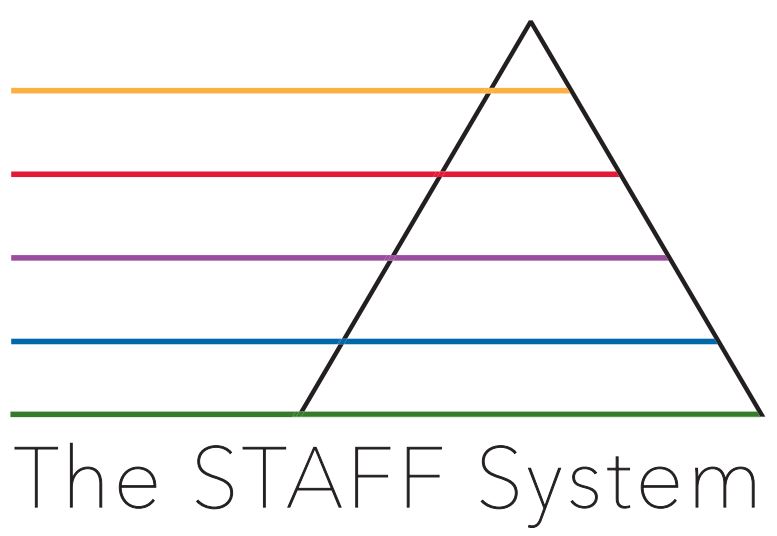This is the first of five posts that describes the five systems at work in your faith-based or private school. As you’ll see, consistent with my “3 leads to 4 leads to 5” theory, the first three will be pretty obvious, which will lead to the fourth (which is connected somehow to all three), and then, after seeing all 4, you’ll see the fifth, which is usually something that has been there all along, but no one ever really thought of it as a separate part of the system. Upon identifying the fifth, it makes the system complete. Because there are 5 systems that combine to make the system of your school, you can then see your school as a living entity, a “system of systems,” just like the human body is a system of systems. In turn, the body itself is only one of the systems involved in the human experience.
As sung in “Life in the Fast Lane” by The Eagles, “Are you with me so far?”
The argument over “What are we” continues to be held in faith-based schools. That is, “Are we a ministry, or are we a business?” In systems thinking, there is no such thing as “or.” A faith-based school is a ministry AND a business. But your faith-based school is also a SCHOOL!” So, let’s take a look at the system that makes your school a school first. It’s designated by the acronym, FACTS.
Facts are logical, and logic is left-brain oriented. The five elements of the system are:
– Faith Identity (or, in the case of a private school, Founder’s Heritage)
– Activities
– Curriculum
– Technology
– Surroundings
It’s easy to see the three usual elements that make your school a school – Activities, Curriculum, and Surroundings – but Faith Identity and Technology are usually considered to be part of the curriculum (as in, we use technology in the classroom, or our Faith Identity is an integral part of our curriculum). Others will ask, “Where are the teachers? Shouldn’t they be the ‘T?'” While they can be considered to be part of the curriculum, or even part of the technology (since technology facilitates learning, and that’s what teachers do), they are actually involved in all 5 elements listed. They’ll be discussed in the a future article, too, since they’re a special system unto themselves, and, arguably, the one that’s of a priori importance to your school’s continued existence. Now, you might be thinking that “leadership” is actually the most important thing regarding your school’s continued existence, and that would be correct…but the leader is also part of the system that will be discussed in a future article in this series.
It could also be argued that technology is part of the surroundings, and teachers need to be aware of the impact of technology since curriculum is being delivered through technology, there can be a technology club, or activities are using new technologies to improve student performance, and Faith Identity can also be delivered via technology. If this was the case, then Technology would have its own system, and would elevate technology to a higher importance level than a teacher…and that’s not something that schools are willing to admit to…yet. In fact, when schools look for remarkable distinctions that are truly their own, the one thing that makes a faith-based or private school truly unique and remarkable is its teaching staff…and that’s something your school should be marketing if it isn’t already. If your can’t pinpoint something in your school which no other school has, it’s your teaching staff (which also gives you some insight regarding that system that will be discussed a bit down the road, because teachers are, in fact, their own system!
The point to keep in mind is that schools are really good at what happens in the “school” system. It’s what teachers are trained to excel at, and schools point to the excellence of all five elements when they’re promoting their schools. It’s difficult to argue with the curriculum when standardized achievement tests point to performance up to 4 grade levels above the standardized norm in faith-based schools. It’s difficult to argue with activities when Catholic schools win State football or baseball championships. It’s difficult to argue with faith-identity because if it didn’t exist, the reason for the school’s existence would also disappear. It’s difficult to argue with technology when you see faith-based and private school initiate a “Chrome from Home” program, so that students can complete assignments on-line during inclement weather, virtually eliminating the need for “snow days” to be made up at the end of the school year, and, in our current pandemic, were able to continue education without missing a beat when the school buildings were closed while many public schools floundered for a few weeks trying to figure out what to do. It’s also difficult to argue with the need for excellence when it comes to the physical environment of the school. Not only does the school community commit itself to providing a safe and caring atmosphere, but the building itself must also be secure, inviting, and a space that provides a stimulating learning experience. You can’t have a leaking roof or a broken boiler and expect excellence as an outcome.
Next month, we’ll look at the right-brain oriented system to complement this left-brain oriented one.
© Michael V. Ziemski, SchoolAdvancement, 2012-2020

